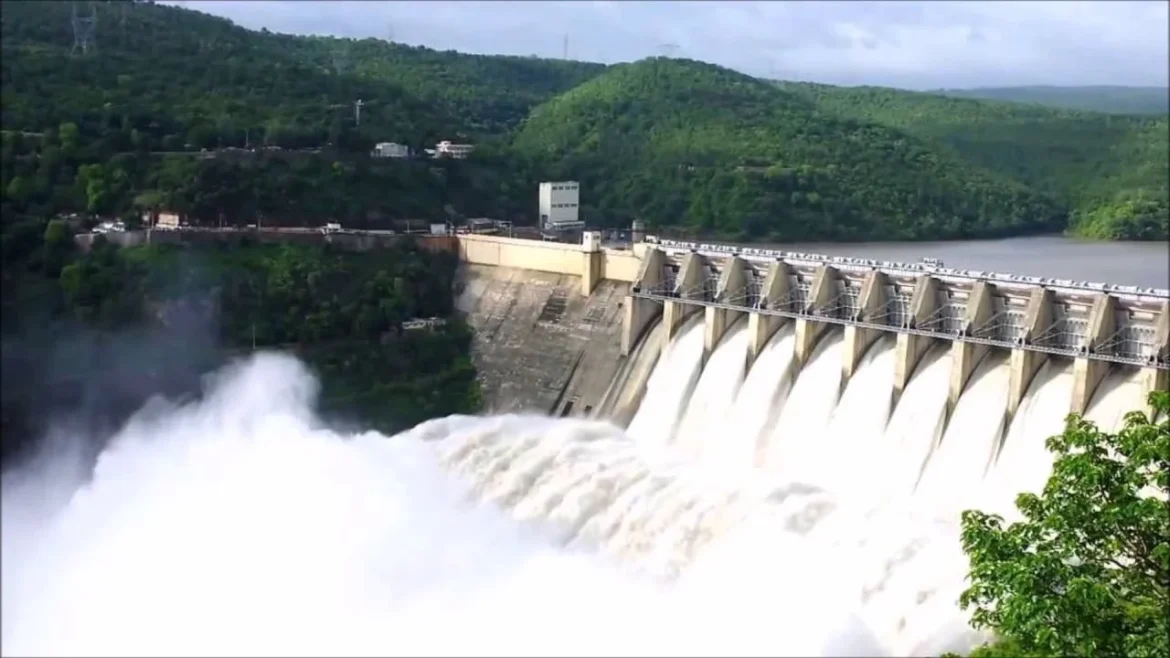By Muhammad Amaan with agency report
Worried about the proposed release of water from the Lagdo Dam in Cameroon into the River Niger and River Benue, states along the flood path have started planning temporary shelters for affected residents.
The Federal Government alerted Nigerians on Tuesday to the plan by the Cameroonian authorities to release water from the Lagdo Dam.
A statement by the Director General/Chief Executive Officer of the Nigeria Hydrological Services Agency, Umar Muhammed, listed 11 states at risk.
They are Adamawa, Taraba, Benue, Nasarawa, Kogi, Edo, Delta, Anambra, Bayelsa, Cross Rivers, and Rivers.
On Wednesday, the Director of Planning, Research, and Statistics of the Nasarawa State Emergency Management Agency, Danladi Obagu, told The PUNCH that the state had begun setting up temporary settlements for residents living in flood-prone areas.
Obagu added that sensitisation campaigns had begun across the 13 local government areas of the state to enlighten residents about the dangers of living around flood-prone areas.
He said, “In preparation for the impending flood, venues for the temporary settlement of displaced persons are already being established in flood-prone areas across the state.”
He added that the agency had deployed officials to Nasarawa, Toto, Doma, Awe, Lafia, Obi, Karu, and Akwanga councils where flooding could occur following the release of water from the Lagdo Dam.
“Efforts are also being made to assist displaced persons with relief materials when the flood arrives to cushion the impact of the hardship they would face. I would therefore like to reiterate the state government’s commitment to continue to support all residents suffering from situations of natural disasters and crises,” he added.
In Benue State, the Commissioner for Humanitarian Affairs and Disaster Management, Mr Aondowase Kunde, disclosed to The PUNCH on Wednesday that the government had also begun identifying facilities to be used as temporary shelters for flood victims.
Kunde said the state had also set up a technical committee on flood disaster preparedness, mitigation, and response.
No fewer than 18 local government areas in the state have been identified to be at risk of flooding. They include Makurdi, Guma, Gwer West, Katsina-Ala, Logo, Agatu, and Apa.
“This committee has earmarked camps to relocate would-be victims in case of flooding. Some of the camps include the International Market, LGEA Primary Schools at Wurukum and Demekpe in Makurdi; Akume Atongo Stadium in Katsina-Ala; and RCM Primary School in Logo,” he said.
The commissioner urged those living around riverine areas to begin relocating.
In Taraba State, the government placed both the State Emergency Management Agency and the National Emergency Management Agency on red alert.
The Commissioner for Special Duties and Humanitarian Affairs, Saviour Noku, disclosed this in a telephone interview with our correspondent in Jalingo.
Noku said awareness campaigns were already underway through radio and social media to inform residents about the potential dangers.
“We are working tirelessly to ensure that people understand the gravity of the situation and take necessary precautions. These public announcements will continue to air, particularly targeting those living in flood-prone areas.
“In addition to the ongoing media campaign, three speedboats have been deployed for patrol, ready to assist in emergency evacuation and provide swift responses in areas cut off by rising waters. The government has also issued advisories urging residents in flood plains to relocate to safer grounds before the dam’s release to avoid disaster,” he said.
The statement also called on the Federal Government to dredge the River Niger as a permanent solution to the perennial flooding in the region.
The Nigeria Meteorological Agency (NMA) listed Patigi, Edu, Moro, Kaiama, and Ilorin East Local Government Areas of the state as flood-prone areas.




